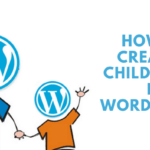WordPress is a powerful and versatile content management system, but it’s not perfect. From time to time, you may encounter errors that can be frustrating and time-consuming to troubleshoot. In this post, we’ll take a look at some common WordPress errors and how you can troubleshoot them.
Step 1: Identify the error
The first step in troubleshooting a WordPress error is to identify the error. Some errors may be obvious, such as a blank screen or an error message, while others may be less apparent. If you’re not sure what’s causing the error, you can try the following:
1. Check the error logs:
You can check your website’s error logs to see if there are any clues as to what’s causing the error. You can find your error logs in your website’s hosting control panel or by using a plugin like WP Debugging.
2. Disable plugins:
Sometimes, plugins can cause errors on your website. Try disabling all of your plugins and see if the error goes away. If it does, you can enable your plugins one by one to identify which one is causing the error.
3. Switch themes:
If you’ve recently changed your website’s theme, try switching back to your previous theme to see if the error goes away. If it does, the issue may be with your new theme.
Step 2: Check for updates
Once you’ve identified the error, the next step is to check for updates. WordPress and its plugins and themes are constantly being updated, and sometimes these updates can fix bugs and issues. Check to see if there are any updates available for your WordPress core, plugins, and themes.
Step 3: Check your website’s files
If the error persists after updating your website, the issue may be with your website’s files. Check to see if any files are missing or corrupted. You can use an FTP client to access your website’s files and look for any missing or corrupted files. If you find any, you can replace them with fresh copies from your WordPress installation files.
Step 4: Seek help from the community
If you’ve tried all of these steps and you’re still experiencing errors on your website, it may be time to seek help from the WordPress community. You can post a question on the WordPress support forum or seek help from a developer or a WordPress expert.
In conclusion, troubleshooting WordPress errors can be a time-consuming process, but by following these steps, you can identify and fix most issues. Remember to always keep your WordPress core, plugins, and themes up to date, and don’t hesitate to seek help from the community if you need it.



